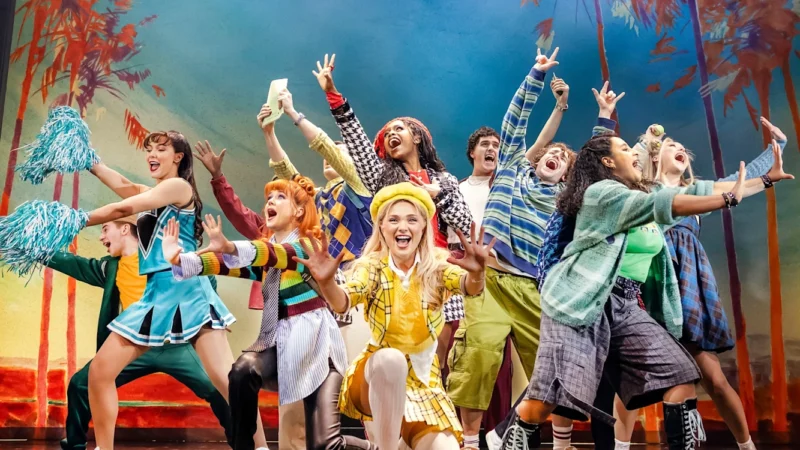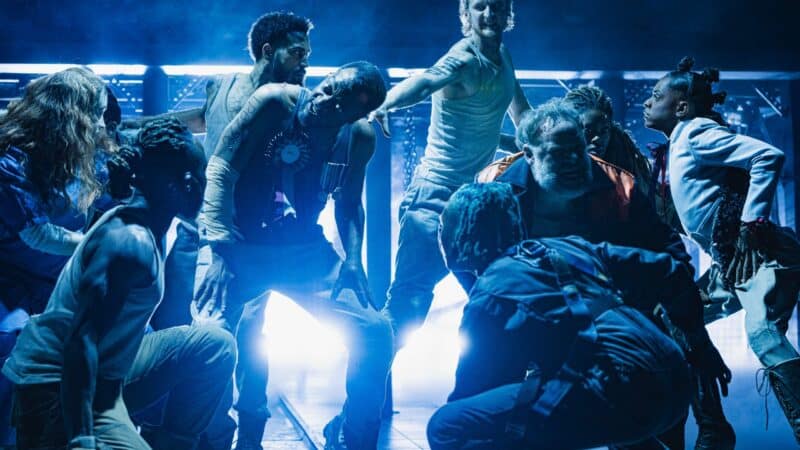The Barbican
Islands are where the world pauses, takes a breath, isolated bubbles with their own rules. Yet the stamp of modernity rarely allows many to escape unaffected. Castle of Joy is another tale in a long lineage, pushing against the conforming boot of the mainland, extending in a furious but rather frantically aimed retaliation.
Det Ferösche Compagnie is a Faroese theatre company. Comprised of members who mostly studied abroad due to the archipelagos (understandable) lack of theatre/dance infrastructure. Accumulatively they have been educated and informed by everything the mainland has to give, and now in an English-Faroese Colombian exchange, they return a distinctive tale.
Citing Complicité as an influence the tale is stripped back, as brutal as a Faroese skyline (the islands are almost completely without trees). Kristina Sørensen Ougaard and Búi Dam are onstage throughout, in a traditional knitted jumper and black trousers/shirt combo respectively. Ougaard plays upwards of 13 characters, and both her and Dam speak in both Faroese and English, quickly alternating. Dánjal á Neystabøis our master percussionist, plonking on piano, and plucking at hanging pipes, bashing on drums. Dam is also the writer, director and movement director, and á Neystabøis is unsurprisingly the composer. A small affair with names cropping up again and again, not my favourite theatrically but a necessity within a small community.
Together they tell the tale of Pól Jóhannus Poulsen (called Joy). Born in 1925 into a large family, bullied and ostracised for his difference and eventually shipped off to an institution in Denmark. The (admittedly thin) silver lining has an uplifting ending as Joy finds a way to build a world of his own (no spoilers here). Det Ferösche Compagnie does its best to bind the tale within the geographic, ethnographic and geopolitical world clanking around the islands. No matter how isolated a community is nothing happens in a vacuum.
Ougaard plays almost all the characters and the narrator, and Súni Joensen’s torch-heavy and stunning projected colour palette quickly changes setting and mood. Onstage instrumentals and the use of a gravel tray/pipes make sure that the dialogue-weighted script has breaks. We see fleeting glimpses into island life, and the tension between the native Faroese and the overlording Danish is a fascinating glimpse into a little-known side of European politics.
It almost reads as the blurb of an action film. A small group of plucky island theatre markers, an epic tale of madness and personal strife. 13+ characters, 2 locations split between a dark cold sea, and 2 languages, all at once?! The piece is spectacularly ambitious, but of course, some of the hooks cast snag on the rocks of practicality. The constant exposition needed to feature both languages (without subtitles) grasps the ankles of the piece slowing it down to a crawl. In particular, poor Ougaard has to try to pull off a 3-way argument with only a change in the tilt of a handheld torch beam. Not easy. The Danish section in the asylum aims at shocking but merely flails into stereotypes and the overarching theme of imagination as a panacea is rather overcooked.
But how many Faroese shows have you seen? If like me the answer is none, the above paragraph can be taken not just with a pinch of salt, but buried in it like Saltfiskur (a traditional dish on the islands, see I do my research). This might be the very first show in Faroese that London has ever seen and just think on that for a second. We have Australian breakfast restaurants galore but no theatre from one of our closest (kinda) sea neighbours. This piece is bringing the unknown and far off to the buzzing heart of the known. Even if some parts of it don’t completely catch the wind, the sailing is absolutely worth it.
Journey to other worlds, click here for what’s on next at the Barbican!



